Actual March 17
Food
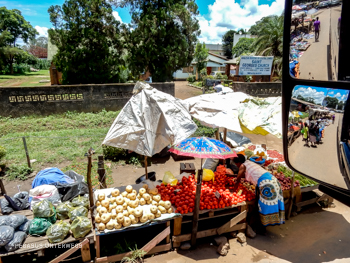
In the district main towns you can find a Shoprite, which normally as a good assortment. On the local markets you get nice fresh vegetables and fruits. Even along the big roads you will find the local products. European stuff like cheese, chocolate or breakfast meat is very hard to get in Zambia.
Water
All of the campsites and some gasoline stations offer drinkable water, most of the times for free.
Diesel
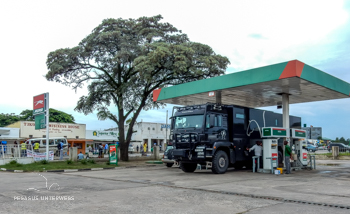
Petrol stations are well spread over the country. The quality of the Diesel is poor and not ideal for modern engines. The sulphur-content is so high, that they don’t even indicate it, we think it’s around 2000ppm. The prices is across the country the same: 10.72 ZMW/l (Jan/Feb 17). You cannot pay with credit card. Be careful, sometimes the tanker truck driver seem to sell some of the diesel and refill it with water or other inappropriate stuff. People told us, that TOTAL (one of the petrol brands) seals it tanks trucks nowadays to reduce the misusage.
Money
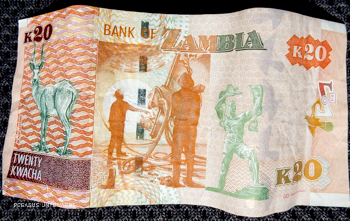
ATM you will find in any bigger village. We could withdraw up to 4000 ZMW. A lot of the bigger tourist attractions accept credit cards. Diesel you have to pay cash, but villages with gasoline stations normally also have ATMs. You will experience that the ATMs are often empty or only work after 10 trials.
The tourist attraction prices are only given in US$ – and in an ideal world they would like you to pay the bill even in US$. But you can always pay in Kwacha, based on the daily actual exchange rate. If you really need US$ you can get it with Barcleys, but first you have to withdraw cash kwacha at the atm and then you can go inside the bank and change it to dollars. It takes hours and you get punished with a double exchange rate loss. And don’t forget your passport, a simple ID card is not enough!!!!
Overnight places
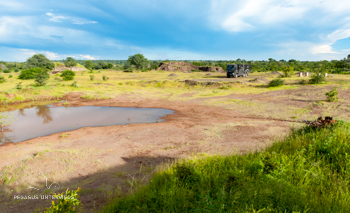
The campsites in the National Heritage Sites are managed by the government and most of the time uninspired designed and poorly equipped. The prices are streamlined: 15 US$pp, plus vehicle 5 US$. This is definitely far too expensive as they often don’t offer power, water, shower or toilets. The government sets the prices, but luckily you can always try to deal and most of the care takers are reasonable people. You can easily do wild camping. The youngsters are very much interested and will sit around you/your car.
It’s hard to find wild animals in Zambia apart from the few big National Parks. Poaching was and still is a huge problem in Zambia, even in the National Parks.
Internet
Like in Botswana you can buy bigger data packages cheaper in conjunction with the purchase of a router. The data you get normally for free for the first 30 days – either 20 or 40 GB, depends on the provider. Airtel sold us a mini-router with 20 GB, which weren’t activated even after 5 days. MTN sold us a router – nearly the same price – with 40GM, which did work after 2 hours already. Everything was done by the shop assistant. With a local SIM card you get internet access easy. In bigger towns MTN is better and quite fast, whereas Airtel is working better in the countryside.
Streets
The main roads are paved. The street network is heavily growing. Contractors from China and South Africa are paving everywhere bits and pieces. The planning though is very chaotic. We have seen so many beautiful paved sections, which start somewhere in the off and end in the off by a river for example. Obviously the bridges are contracted out separately or not at all. Unfortunately the constructors are not paid these days, so a lot of the sections they started working on are left in the middle of the work. Often the earth tracks are better than old tar roads, as they have more potholes than tarred areas.
Our personal highlights
1. Victoria Falls (water fall)
2. Kapisha Hot Springs (beautiful lodge, nice people)
3. Samfya (lake, chilling)
4. Chisimba Falls (water fall)
5. new road direction Katima (lovely view over Sambesi)
6. HRH Chief Chilosi (interesting encounter)
7. Ntumbachushi Falls (water fall)
8. Ngonye Falls (water fall)
9. Mumbwa (cool local market)
10. Road Matumbo-Chama (adventurous drive)
Regulations around heavy vehicles
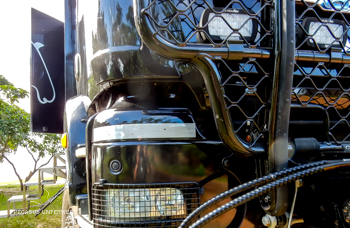
All trucks, camper cars as well, need to have a red reflector in the back along the entire width of the vehicle. At the front you need 2 white reflectors. In addition you need to have an ugly yellow 80km/h sign in the back. All vehicles need to carry 2 breakdown tinplate triangles. The good old Swiss triangle are not accepted.
Here and there you will find weigh-bridges for trucks. Being a camper truck you don’t need to undergo that procedure as you are not a commercial truck. If you feel to do it anyway, you can use the preferred bus line, which will save you many hours in the line.
Border formalities
It’s not a big problem to get 3 month visa at the border. But you get clearing for only the first 30 days. For the next 30 days you need to get another stamp in any of the district towns. This is easy and for no extra costs.
The carnet de passage is stamped without any problems and done in a professional way. The lady at the counter was nice to let us overtake the long line at the truckers counter, but we felt somewhat bad about it. However, it worked out well.
It took us about 3 hours to cross the boarder in Kasungula. The costs are quite high: visa for 2 person 1’100 ZMW, carbon tax for Globi & Ernstly 345 ZMW, district fee 50 ZMW (another one on our way for 70 ZMW), insurance 1500 ZMW, 80km/h sign 50 ZMW, facilitator 50 ZMW, road tax 70 US$, another 70 US$ later in the north. We’ve asked other travellers who paid only 30 US$ road tax, but we heard also that other paid 270 US$. Seems to be a flexible system. Nevertheless the road tax has always to be paid in US$ cash.
Our Stats
Daily expenses for 2 people:
| Food Alcohol HH-Nonfood Clothes Trips Restaurant Overnight places Transport Internet / Tel Fees Health Diesel |
CHF 16.91 CHF 1.46 CHF 0.39 CHF 0.00 CHF 1.15 CHF 5.60 CHF 18.28 CHF 0.00 CHF 5.89 CHF 11.05 CHF 0.00 CHF 1.09/L |
Personal Observations
In the countryside we saw a lot of churches and a lot of sects. People seem to be mainly christian and very religious. In the country the people live in big families with 8-12 children. If they don’t change that a population explosion will eat up the nutrition and finance reserves of Zambia.
The main means of transportation in the rural areas are Chinese bicycles, often without any breaks.
The old beautiful hardwood trees are nearly completely cut down and turned into charcoal. It’s forbidden, but every 500m you see little stands along the street where they sell it.
Zambia is the surge chamber of Africa and everything is growing without any problems. But often the way they farm is not well organised, respectively done in an old fashioned way.
Wild animals you can only find in 2-3 National Parks. The rest is gone with heavy poaching.
The people, the police, the governmental offices we experienced throughout as extremely helpful and friendly.


Leave A Comment